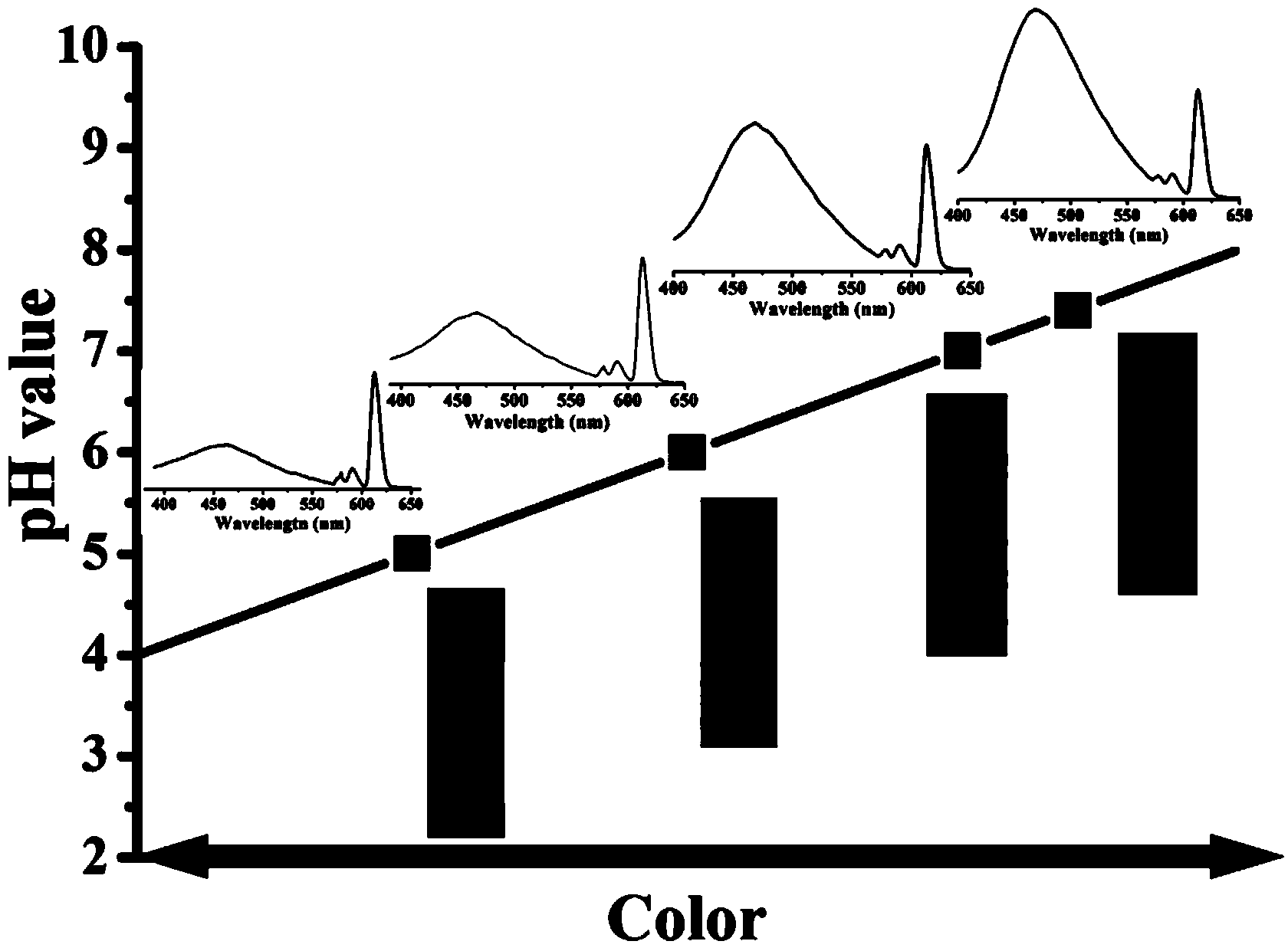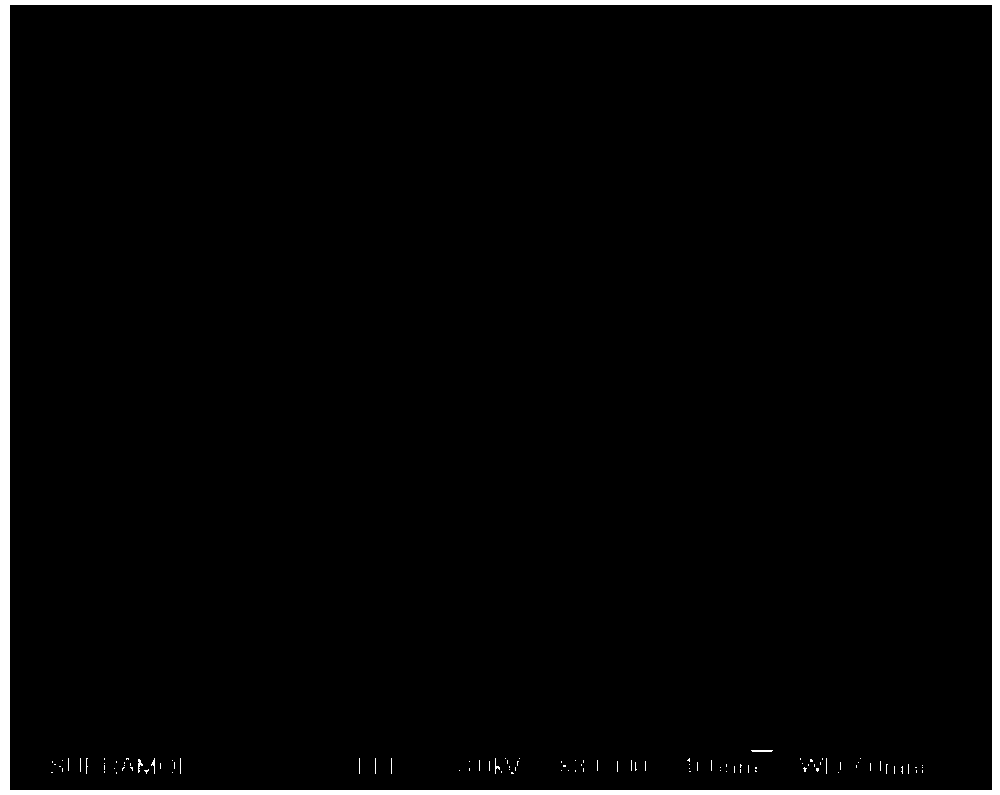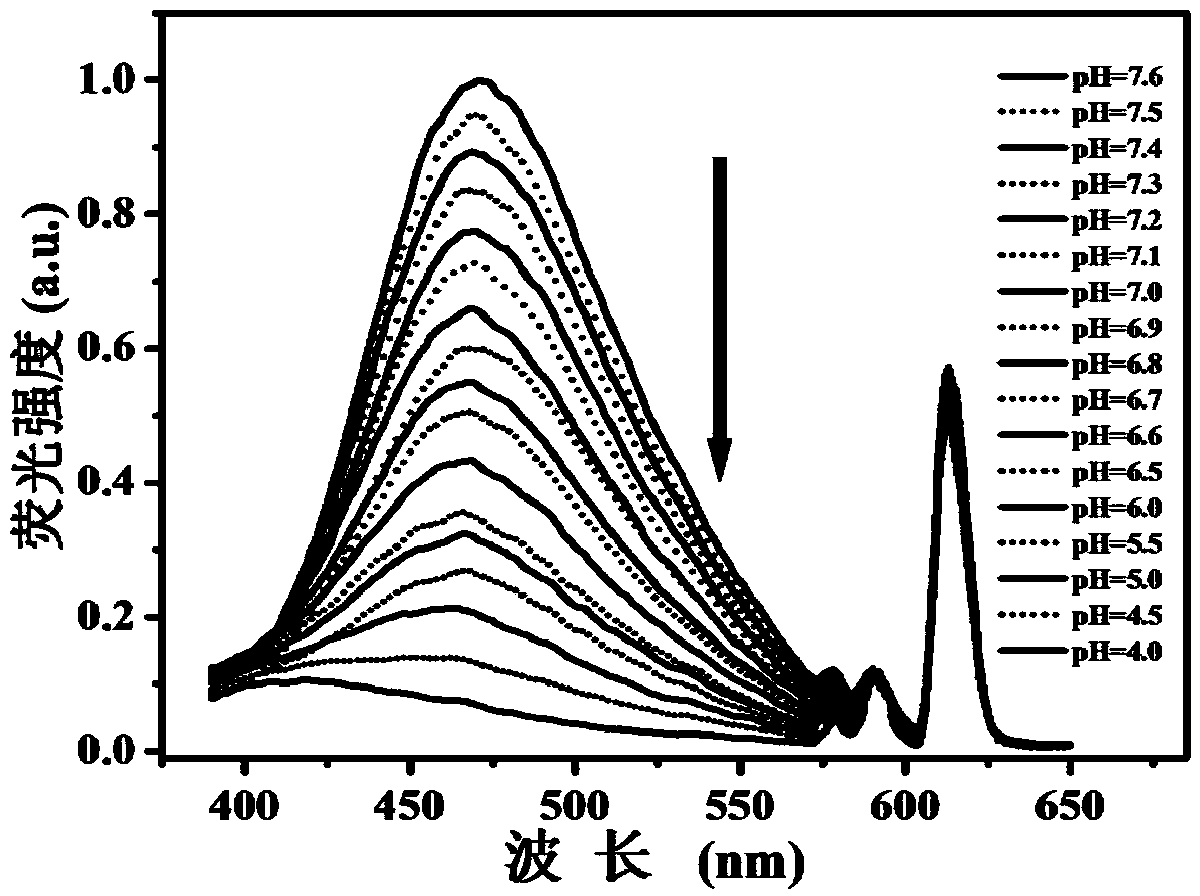Dual-fluorescence functional polymer nanometer microsphere with pH response and application thereof in tumor tissue detection
A technology of nano-microspheres and polymers, which is applied in the field of fluorescent materials, can solve problems such as interference and easy errors in detection results, and achieve the effect of good response function
- Summary
- Abstract
- Description
- Claims
- Application Information
AI Technical Summary
Problems solved by technology
Method used
Image
Examples
Embodiment 1
[0024](1) Weigh 4.42mmol of NIPAM monomer and dissolve it in 185mL deionized water, add it to a 500mL three-necked bottle, add 1.4×10 -6 mol of rare earth complex Eu(TTA) 3 Phen, 5mL of styrene (St), at room temperature and under nitrogen protection, mechanically stirred (400rpm) for 30min, then gradually warmed up to 70°C, added 15mL of an aqueous solution containing 0.3mmol of initiator potassium persulfate (KPS) in the system, and initiated polymerization. The reaction was carried out for 12h to end. The polymer seed microspheres containing the rare earth complex are obtained. Impurities such as unpolymerized monomers and initiators in the liquid phase were removed by high-speed centrifugation (18500 r / min), and then dissolved in 100 mL of deionized water for use.
[0025] (2) Slowly pour the seed microsphere solution obtained in step (1) into a 500mL three-neck bottle, use this as the seed, synthesize EuPS / PNIPAM-PAA core-shell microspheres by seed emulsion polymerizati...
Embodiment 2
[0029] (1) Weigh 5 mmol of NIPAM monomer and dissolve it in 100 mL of deionized water, add it to a 500 mL three-necked bottle, add 1.5×10 -6 mol of CdTe, 5mL of fluorostyrene (F-St), under the protection of nitrogen at room temperature, mechanical stirring (400rpm) for 30min, then gradually warming up to 70°C, adding 10mL of sodium persulfate (Na 2 S 2 o 8 ) 0.3mmol aqueous solution in the system to initiate polymerization, and the reaction was carried out for 12h to end. The obtained CdTe-containing polymer seed microspheres were centrifuged at a high speed (18500r / min) to remove impurities such as unpolymerized monomers and initiators in the liquid phase, and then dissolved in 100 mL of deionized water for use.
[0030] (2) Slowly pour the seed microsphere emulsion obtained in step (1) into a 500mL three-necked bottle as a seed, synthesize CdTe-PFS / PNIPAM-PMAA core-shell microspheres by seed emulsion polymerization, and add 45mmol NIPAM, 3.5mmol MAA, at room temperature a...
Embodiment 3
[0034] (1) Weigh 5 mmol of NIPAM monomer and dissolve it in 190 mL of deionized water, add it to a 500 mL three-necked bottle, add 2×10 -6 mol of RhB, 5mL of styrene (St), at room temperature and under the protection of nitrogen, stir mechanically (400rpm) for 30min, then gradually raise the temperature to 70°C, add 10mL of an aqueous solution containing 0.3mmol of initiator ammonium persulfate (APS) to the system , Initiate polymerization, and the reaction ends after 12h. The obtained RhB-containing polymer seed microspheres. Impurities such as unpolymerized monomers and initiators in the liquid phase were removed by high-speed centrifugation (18500 r / min), and then dissolved in 100 mL of deionized water for use.
[0035] (2) Slowly pour the seed microsphere solution obtained in step (1) into a 500mL three-necked bottle, and use this as a seed to synthesize RhB-PS / PNIPAM-PMAA core-shell microspheres by seed emulsion polymerization, and inject them into the system Add 40mmol...
PUM
 Login to View More
Login to View More Abstract
Description
Claims
Application Information
 Login to View More
Login to View More - R&D
- Intellectual Property
- Life Sciences
- Materials
- Tech Scout
- Unparalleled Data Quality
- Higher Quality Content
- 60% Fewer Hallucinations
Browse by: Latest US Patents, China's latest patents, Technical Efficacy Thesaurus, Application Domain, Technology Topic, Popular Technical Reports.
© 2025 PatSnap. All rights reserved.Legal|Privacy policy|Modern Slavery Act Transparency Statement|Sitemap|About US| Contact US: help@patsnap.com



